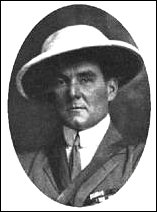The well-preserved skull belonged to a male Homo erectus about 40 years old. All his teeth, except the left canine, were missing. The empty tooth sockets had been filled in by a regrowth of bone, the scientists said, indicating that the man had been toothless for at least two years before he died at what was then an old age. (The discoverers call him the "old man.")
In a report in today's issue of the journal Nature, the discovery team said the 1.77-million-year-old skull "raises questions about alternative subsistence strategies in early Homo."
Specifically, how could the man have survived that long, unable to chew the food of a mainly meat-eating society?
In interviews and the current issue of National Geographic, the paleoanthropologists said caring companions might have helped the toothless man in finding soft plant food and hammering raw meat with stone tools so he could "gum" his dinner. If so, they said, this was evidence of a kind of compassion that had been absent in the ancestral fossil record before the Neanderthals 60,000 years ago.

No comments:
Post a Comment